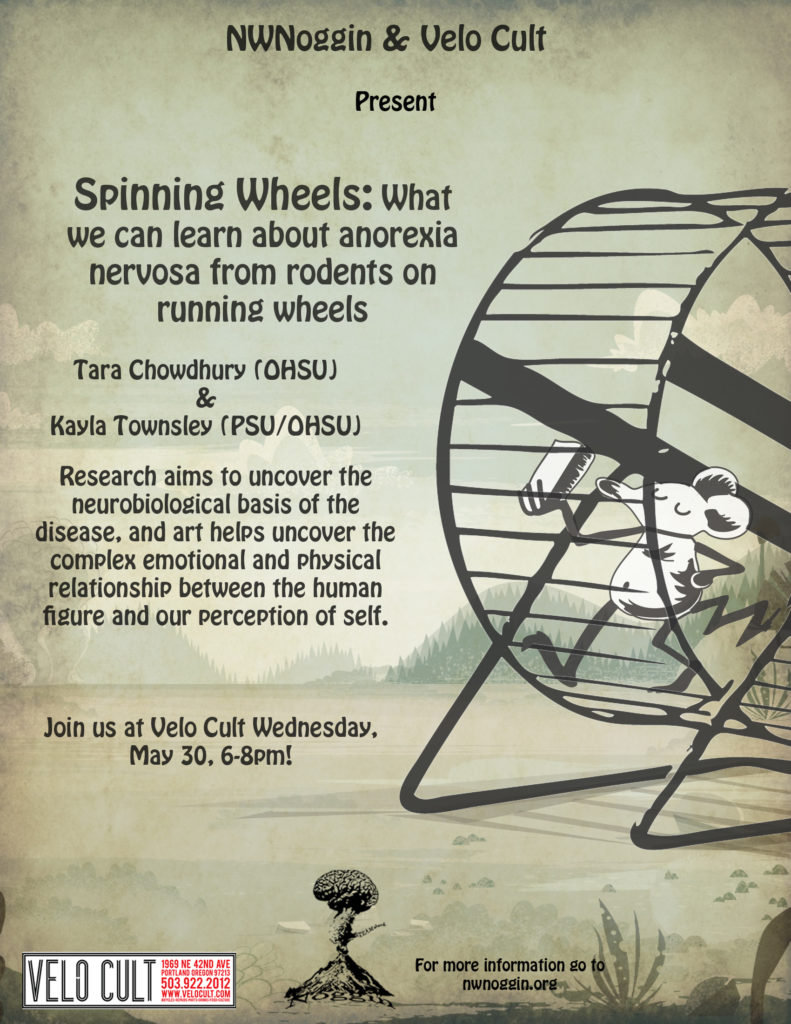“To lose confidence in one’s body is to lose confidence in oneself” –Simone de Beauvoir

When you look at yourself in the mirror, what do you see? The perception of your body is complex, integrating detection of touch, muscle stretch, joint position, visceral activities, acceleration, balance, metabolism – and of course the radiation reflected off that mirror, which generates an informative pattern of brain-directed neural output from your eyes.
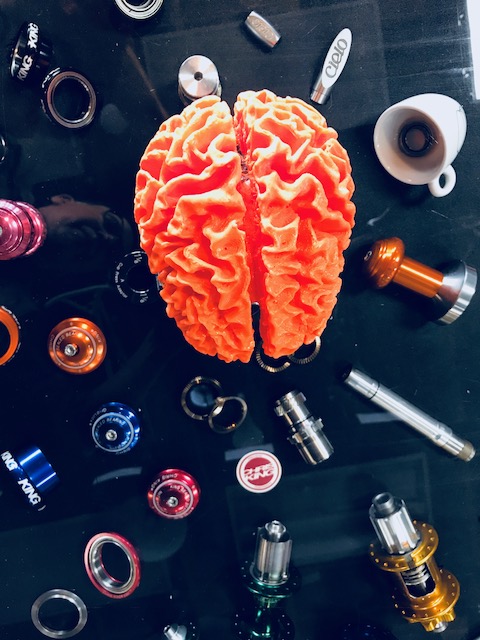
Where are you? How big is your body, or how thin? How do you feel about it? Where does your body actually begin, and end?
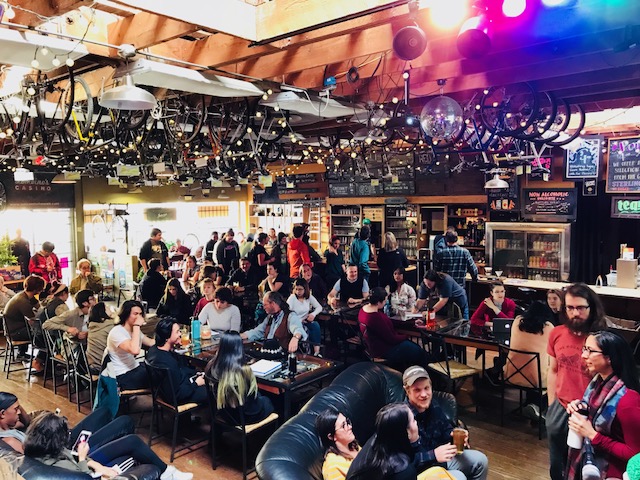
A curious crowd arrived at Portland’s welcoming Velo Cult to learn more about how we perceive and maintain our bodies, and how eating disorders like anorexia nervosa can severely compromise perceptions, behavior, and our mental and physical health…

LEARN MORE: Anorexia nervosa
We came to hear from Tara Chowdhury, a post-doctoral researcher from Bita Moghaddam’s lab in Behavioral Neuroscience at OHSU, and Kayla Townsley, an NIH BUILD EXITO scholar, recent PSU graduate, Noggin Resource Council member for STEAM assessment and an OHSU research assistant from Angela Ozburn’s lab. Kayla is also an accomplished painter, and brought new works that explore how our brains perceive our bodies…

LEARN MORE: Kayla Townsley: The neuroscience of teaching art & science
“How many people here know somebody with anorexia?” began Tara. A substantial number of people raised their hands…

“Did you know that anorexia has the highest mortality rate of any mental disorder..?” Most of us did not.

From the National Institute of Mental Health (NIMH): “People with anorexia nervosa may see themselves as overweight, even when they are dangerously underweight. People with anorexia… typically weigh themselves repeatedly, severely restrict the amount of food they eat, and eat very small quantities of only certain foods…While many…with this disorder die from complications associated with starvation, others die of suicide.”
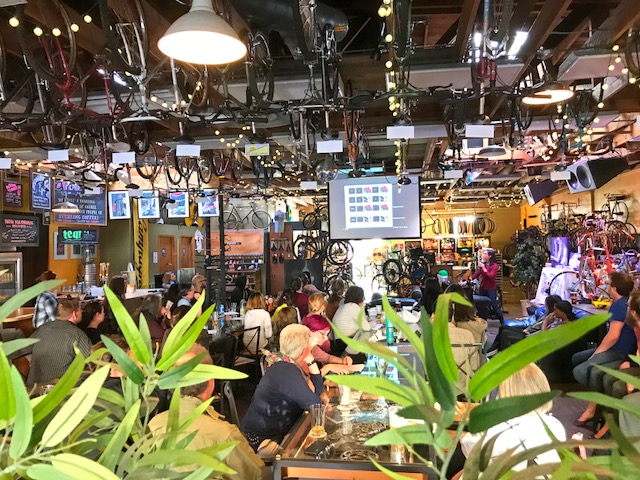
LEARN MORE: NIMH on Eating Disorders
LEARN MORE: Mortality rates in patients with anorexia nervosa and other eating disorders. A meta-analysis of 36 studies
“Anorexia is devastating,” Tara continued. “Patients have delusions, extreme starvation, and they keep moving around compulsively. They see themselves as larger than they actually are – they see themselves as fat.”

“Women,” she noted, “are more commonly diagnosed,” particularly during adolescence. “But maybe,” she wondered, “this is because the disorder is under-reported in males due to stigma surrounding anorexia. It’s often dismissed as a minor problem for ’emotional teenage girls’, and not the serious, life-threatening illness it actually is.”
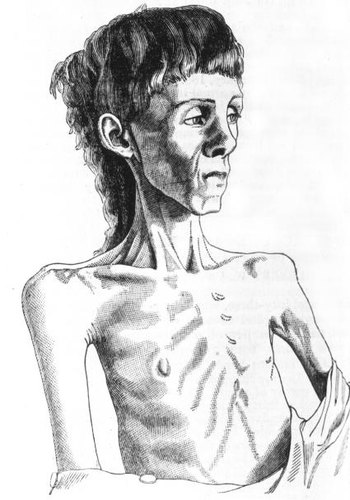
19th century drawing of young woman with anorexia nervosa

LEARN MORE: Attitudes and knowledge regarding bulimia and anorexia nervosa
LEARN MORE: Perceptions of the causes of eating disorders: a comparison of individuals with and without eating disorders
LEARN MORE: Eating Disorders in Men: Underdiagnosed, Undertreated, and Misunderstood
Kayla Townsley introduced a series of her paintings titled Disembodiment.

Disembodiment series, by Kayla Townsley
“I was interested in exploring how perceptions of our bodies influence our own experience and behavior,” she explained. “I stood in contorted and awkward positions, and took pictures of body parts that I don’t always notice, or consider – the backs of my heels, for example, and the underside of my calves…”

“I focused on my hands, too, in these pieces. I chose these because I realized, when cropped in offset ways, you become unsure about who the hands belong to, and it’s unsettling…”
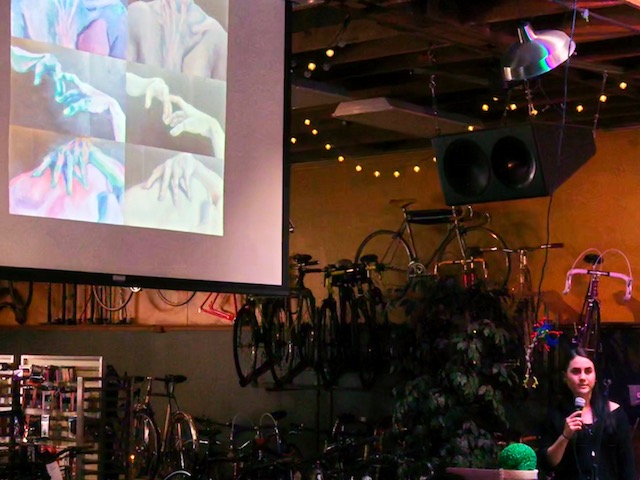
“With anorexia, your personality is not reflected in how you’re seeing your body in the mirror, and doesn’t match who you feel like as an individual,” observed Kayla. “So I used translucent colors in these paintings that felt alien and strange for skin tone to capture this sense…”
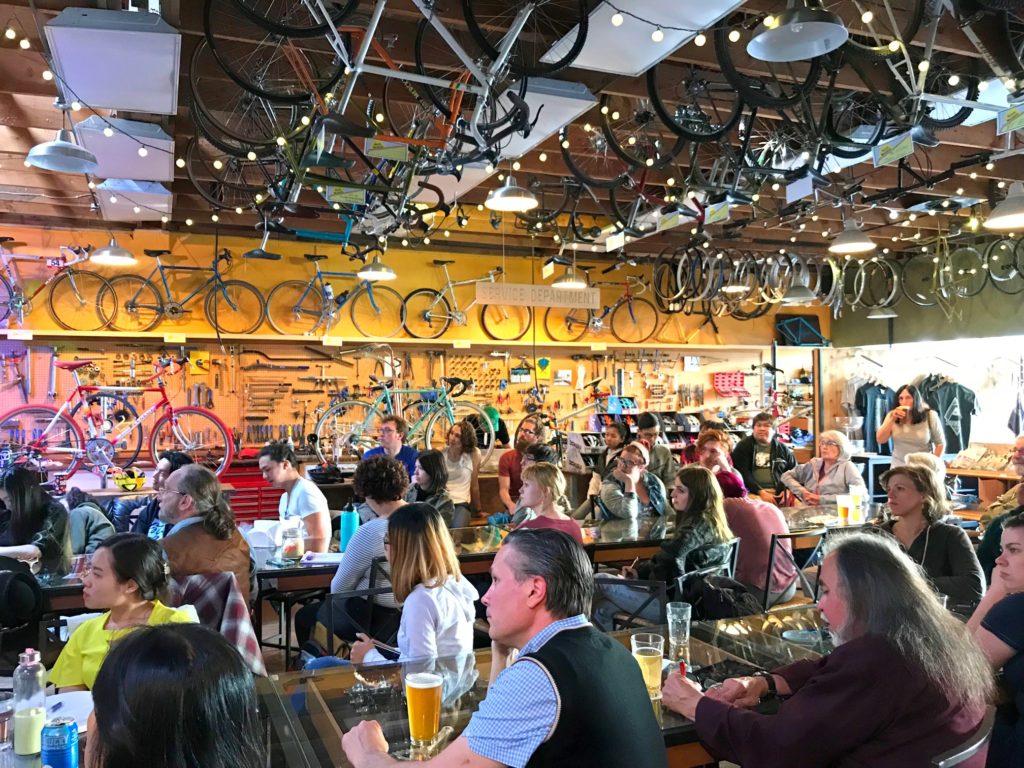
“When I first learned that there was a rodent model for anorexia I was surprised,” exclaimed Tara, who studied anorexia in rats while at the Center for Neural Science at New York University.
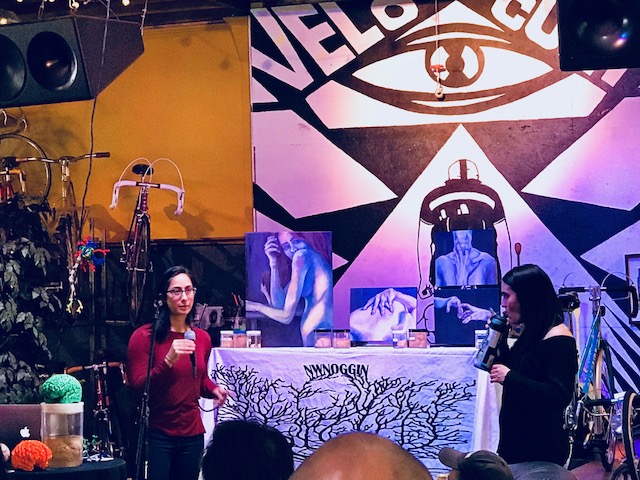
This rodent model, known as activity-based anorexia (ABA) “mimics many symptoms of anorexia quite well,” she explained. “Rats love to run on exercise wheels, and if you restrict their access to food, they get hyperactive and run even more…”

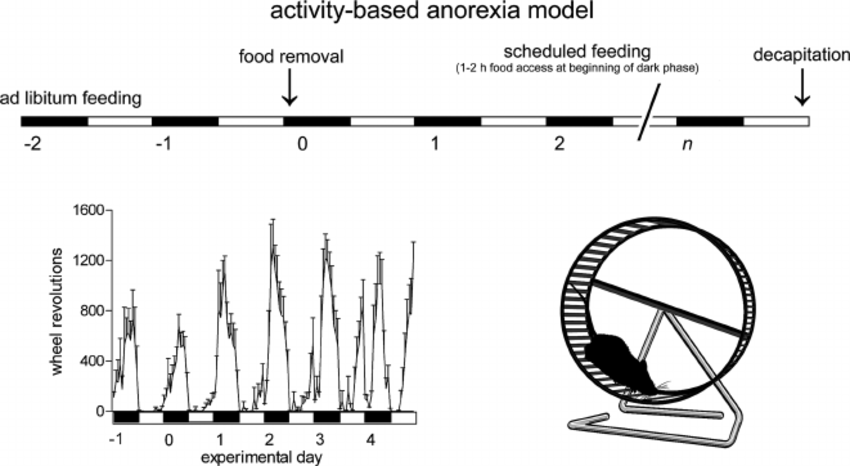
The activity-based anorexia model rodents are housed in cages with running wheels. Once these animals get food once a day at a fixed time point for 1–2 h, they will increase their activity.
LEARN MORE: Neurobiology Driving Hyperactivity in Activity-Based Anorexia
LEARN MORE: Using the Activity-based Anorexia Rodent Model to Study the Neurobiological Basis of Anorexia Nervosa


Moderate food restriction and exercise can reduce mortality risk, and improve health and cognition, but these ABA rats will run, and run – and run so much that they worsen their starvation and often die as a result…

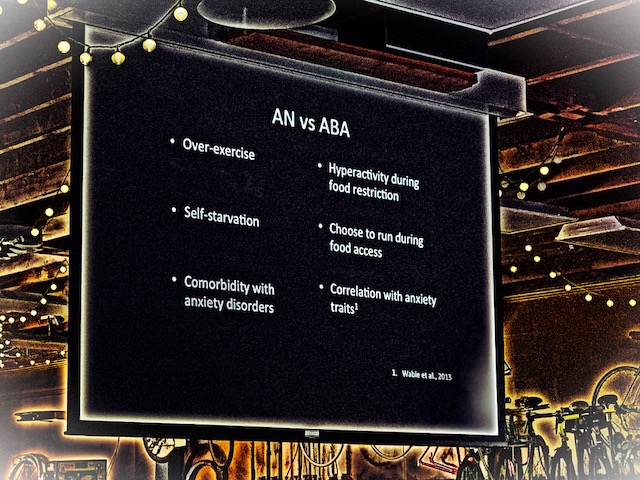
“And rats with higher anxiety before food restriction will exhibit more extreme symptoms,” noted Tara. “They show more hyperactivity, eat less, and have a greater likelihood of dying…”
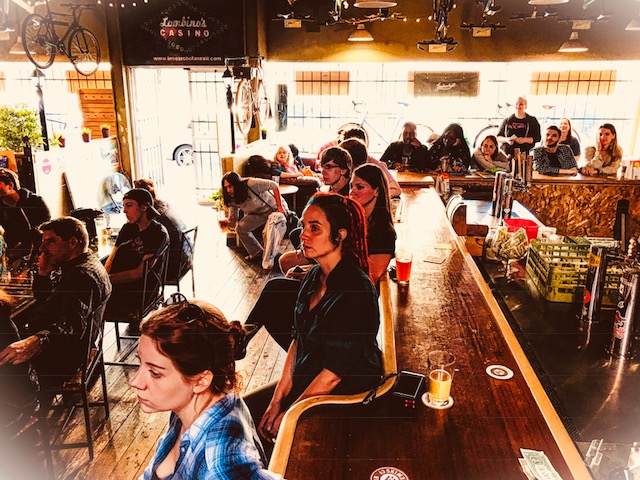
LEARN MORE: Difference in susceptibility to activity-based anorexia in two inbred strains of mice
Because of this link between anxiety and the severity of symptoms, Tara was curious about what might be happening in a brain area known as the hippocampus. “Many people know about the hippocampus,” she said, “and they associate it with spatial memory, and memory for what happened…”

LEARN MORE: White Matter on Wy’East
“However, the hippocampus is heavily modulated by female hormones, and by stress – and there is lots of hippocampal development during adolescence, when anorexia is typically diagnosed,” said Tara.
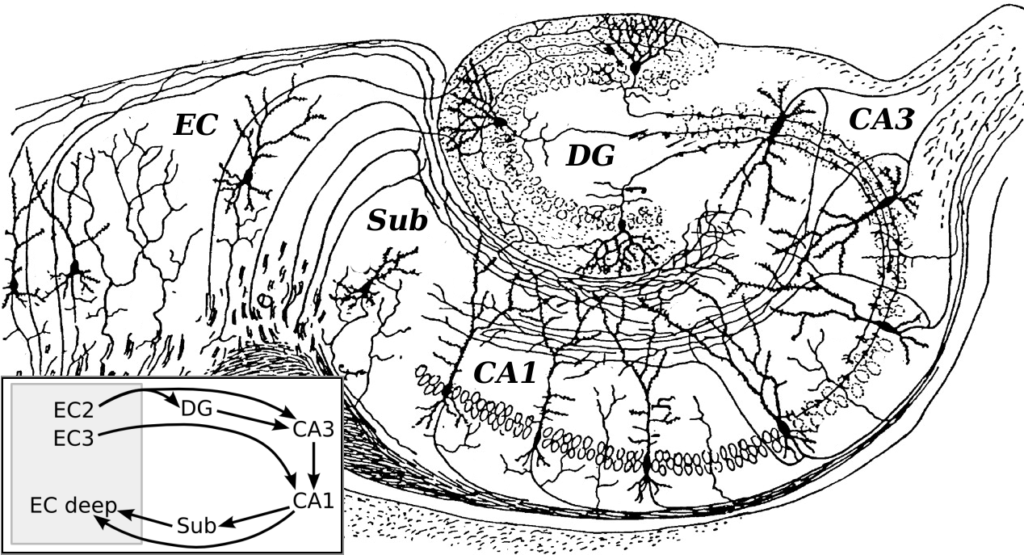
Hippocampus. Drawing by Ramon y Cajal
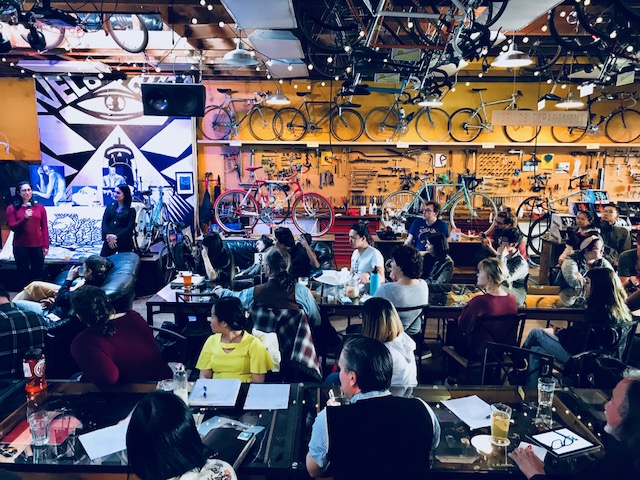
Eileen Torres, a graduate student from OHSU, along with visual artist and printmaker Joshua Abraham, explored how stress and diet affect the hippocampus during a Velo Cult presentation in December…
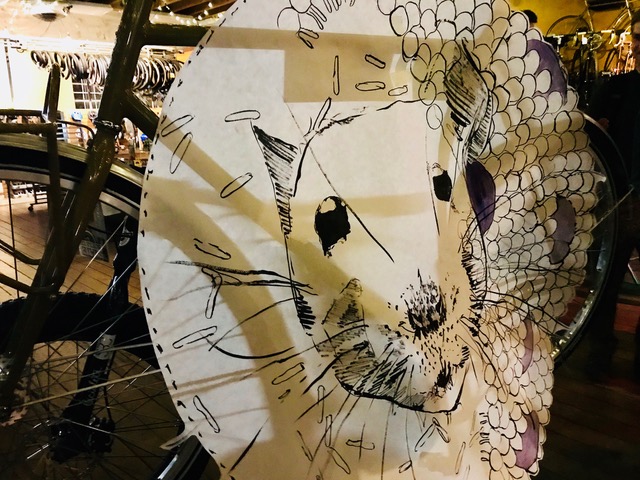
LEARN MORE ABOUT STRESS, ART, DIET, MEMORY: Feeling stressed?
And different parts of the hippocampus do different things. “In the rat,” explained Tara, “the ventral hippocampus is associated with ‘limbic’ emotional responses, including anxiety, while the dorsal hippocampus is more important for spatial memory…”

LEARN MORE: Regional dissociations within the hippocampus—memory and anxiety
So how might food restriction and exercise in the ABA model change brain cells in the hippocampus?


Tara directly examined the morphology (structure) of neurons in both the dorsal and ventral hippocampus, using the Golgi stain to reveal individual neurons in their entirety, as well as a statistical technique known as a Sholl analysis to compare the number of dendrites in different parts of each cell.


LEARN MORE: Golgi-Cox Staining Step by Step
LEARN MORE: The Golgi Stain: invention, diffusion and impact on neurosciences
LEARN MORE: Automated Sholl analysis of digitized neuronal morphology at multiple scales
Tara found clear differences in the number and extent of these dendrites, and thus the number of synaptic connections, between control rats and those experiencing the food restriction and hyperactivity in the ABA paradigm…
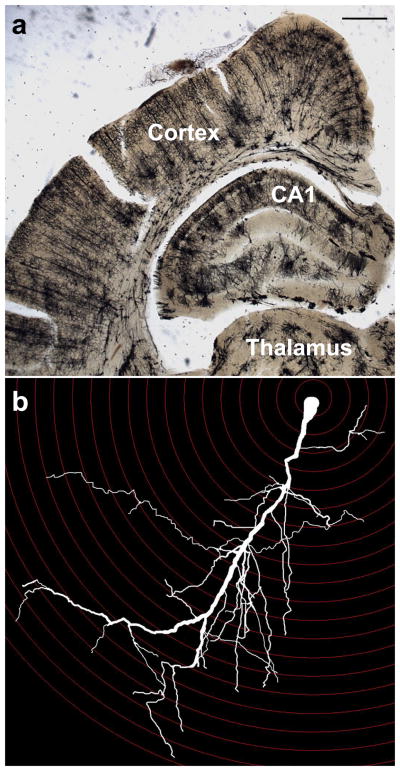
CA1 pyramidal cell from rostral-dorsal hippocampus traced using Neurolucida and analyzed by the Sholl method. a Golgi-Cox stained coronal section of rostral-dorsal hippocampus approximately −3.00 mm from Bregma; scale bar marks 1 mm, b Digital reconstruction of CA1 pyramidal cell traced using Neurolucida with Sholl spheres at 20 μm intervals

“Food restriction also affected the distribution of these dendrites differently than exercise did,” explained Tara. “Caloric restriction affected the layers of the hippocampus that receive input from other brain structures, including the thalamus and cortex, while exercise changed the layers that receive input from within the hippocampus itself…”

LEARN MORE FROM TARA’S RESEARCH: Activity-based anorexia has differential effects on apical dendritic branching in dorsal and ventral hippocampal CA1
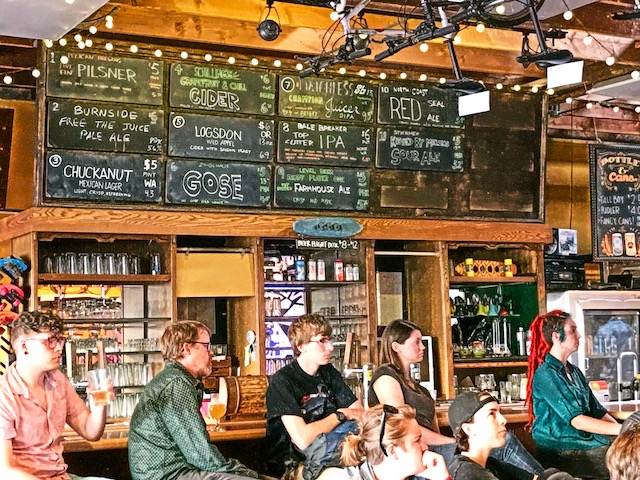
“Although the physical and behavioral characteristics of anorexia are visible and widely recognized, eating disorders also take a severe psychological and emotional toll,” emphasized Kayla, introducing another striking piece titled “Within self, self without…”

“I wanted to bring notice to these internal struggles, the profound psychological and emotional experiences of anorexia…”

Within self, self without, by Kayla Townsley
“I used more expressive colors and less realistic figuration because I allowed myself to paint mostly without reference, instead letting the form come from intuition as I kept in mind some of the psychological effects of this disorder – including the anxiety, social isolation and withdrawal, depression, feelings of inadequacy, and restrained emotional expression…”
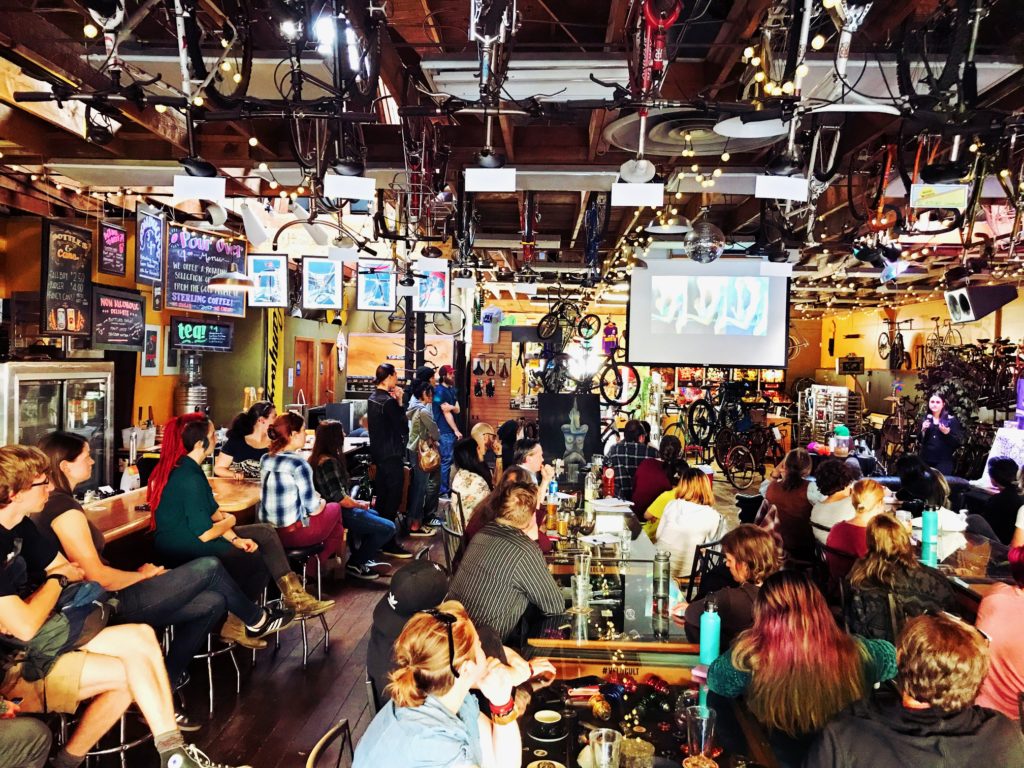
“I find these images very moving,” declared Tara. “In the early figures there is not even a face..”
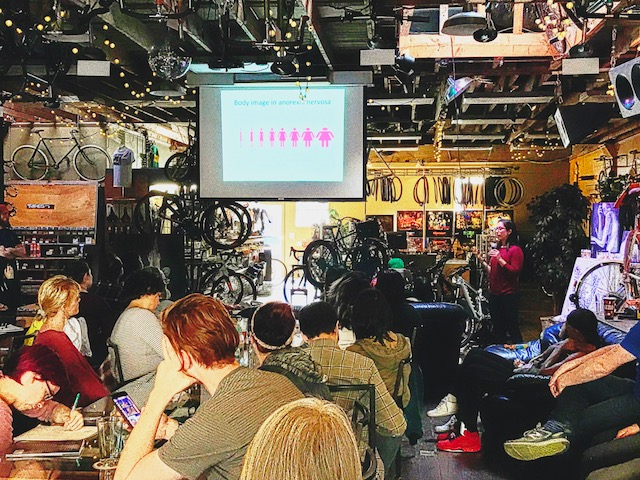
“There are so many aspects to this disorder,” she added. “There are changes in the hippocampus, and the reward system is enhanced to exercise, but decreased to food…”
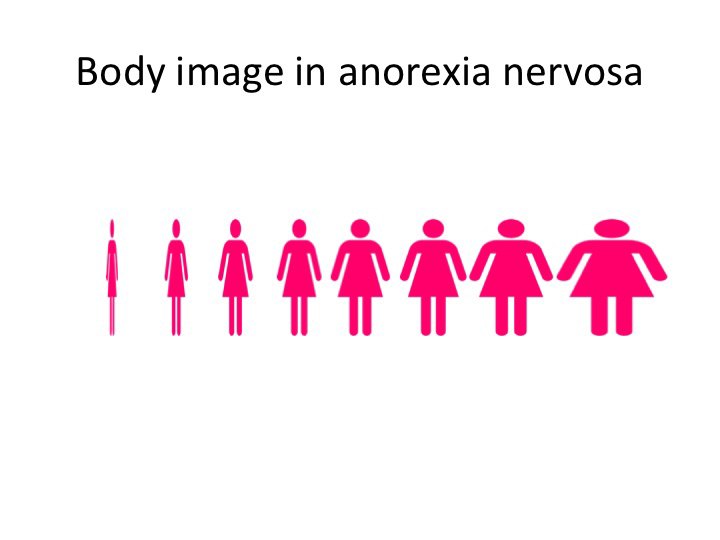
LEARN MORE: Altered Brain Reward Circuits in Eating Disorders
LEARN MORE: Dysregulation of Brain Reward Systems in Eating Disorders
Tara then presented data from a fascinating human study of anorexia (“not my area”), where both patients and non-anorexic controls were shown digitally doctored images of their own bodies as they lay in an fMRI imaging scanner. Fifteen of the images depicted thinner versions of their bodies, and fifteen were heavier…
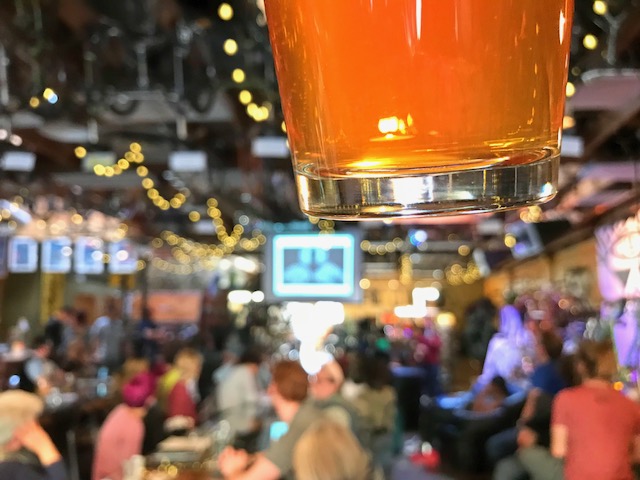
LEARN MORE ABOUT fMRI: A Zombie Feast: Imaging Brains @ Velo!
The precuneus region of the parietal lobe is implicated in self-awareness, and is part of a set of inter-connected brain areas involved in self-referential processing and rumination, known as the default network. The precuneus also integrates the detection of touch, body position, vestibular and visual details about where our bodies actually are. Healthy subjects showed selective enhancement of precuneus activity in response to the heavier pictures – and they did not think that bloated photos reflected their body accurately at all…

“Anorexia patients, in contrast, reported less satisfaction with the accurate representation of their body than controls,” noted Tara. “These patients misperceived their own body, claiming that those heavier distortions were more correct…”
LEARN MORE: Separating two components of body image in anorexia nervosa using fMRI
LEARN MORE: Reduced salience and default mode network activity in women with anorexia nervosa
LEARN MORE: Self and other body perception in anorexia nervosa
Parietal lobe areas like the precuneus which integrate aspects of body sensation are heavily linked to maps in the insular lobe, a more medial expanse of cortex that also receives input from visceral (gut) receptors, along with other emotionally salient information from the body – e.g., from receptors detecting injury, temperature, itch…
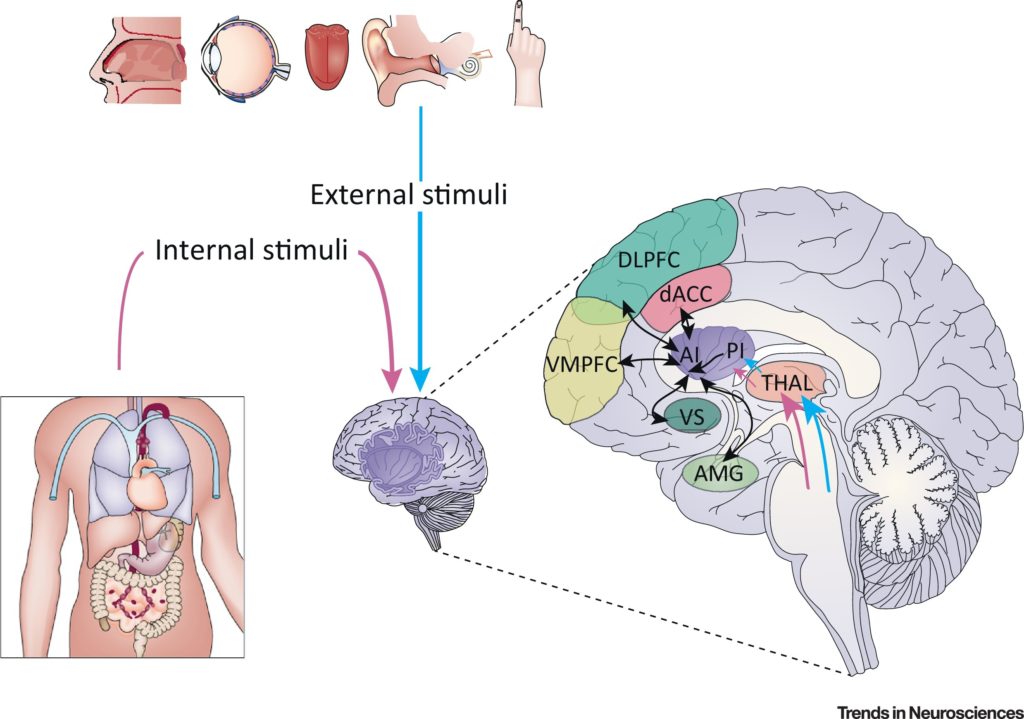
The insula (AI, anterior insula and PI, posterior insula) is found deep within the lateral fissure, the deep crevasse separating the temporal lobe from frontal and parietal lobes. It receives visceral and emotionally salient sensory input, it integrates body touch, positional, vestibular and visual inputs from the parietal lobes, and it connects with many decision making “executive” networks in the prefrontal cortex (e.g., VMPFC, DLPFC)…

LEARN MORE: The Insula: An Underestimated Brain Area in Clinical Neuroscience, Psychiatry, and Neurology
LEARN MORE: Anterior Insular Cortex and Emotional Awareness
LEARN MORE: Functional neuroanatomy of the insular lobe

So a distorted body image is fed into some emotionally important areas, like the insula, which informs important decision making regions in the frontal lobe. Patients with anorexia exhibited selectively greater activation of this region, and of the prefrontal cortex, when shown the thinner versions of themselves…

“Can yoga help?” wondered Tara. “You can’t really over-exercise with yoga, and some forms are also linked to relaxation and reduced anxiety.” In addition, current treatment approaches are often ineffective, and sometimes extremely aversive, including force feeding to restore needed calories…

LEARN MORE: Treatment and management of anorexia nervosa
LEARN MORE: A review of feeding methods used in the treatment of anorexia nervosa
“From preliminary research, there appears to be something about the practice of yoga that lets people disengage from the more emotional aspects of what they are viewing,” said Tara. “Maybe this can be helpful for patients with anorexia who have overly emotional responses to their own bodies and allow them to disengage..”
LEARN MORE: Neurocognitive correlates of effects of yoga meditation practice on emotion & cognition
LEARN MORE: Use of yoga in outpatient eating disorder treatment

Seated Eagle, Kayla Townsley
“This last piece focuses on the possible benefits of yoga and mindfulness-based treatment for anorexia,” Kayla told us. “The figure is in a seated eagle pose, and I chose this for a few reasons. First, it is not a strenuous pose and works to stretch the arms and lift the spine, really contrasting with the inwardly curved posture of the previous piece. Second, you often sit for some time, working on breathing and grounding your body…”

“Lastly, and possibly most important, is that the figure is still somewhat retracted into themselves. Their arms are intricately folded, still blocking their face.”

“Treatment and recovery,” said Kayla, “are often over-dramatized as a new-found freedom, but I think it’s important to realize that healing is never linear, and living with any eating disorder is a life long struggle…”

“There is no magic cure, no making it all go away forever. There are only small steps upward; an easier day, an unexpected laugh, a mirror that doesn’t matter anymore.” –Laurie Halse Anderson
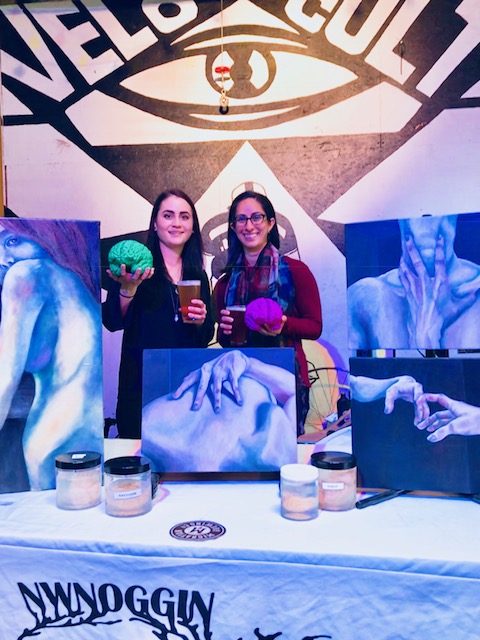
Many thanks to Kayla and Tara for a compelling and accessible presentation, and to Velo Cult for their strong support of NW Noggin arts-integrated neuroscience outreach in the Pacific Northwest..!
